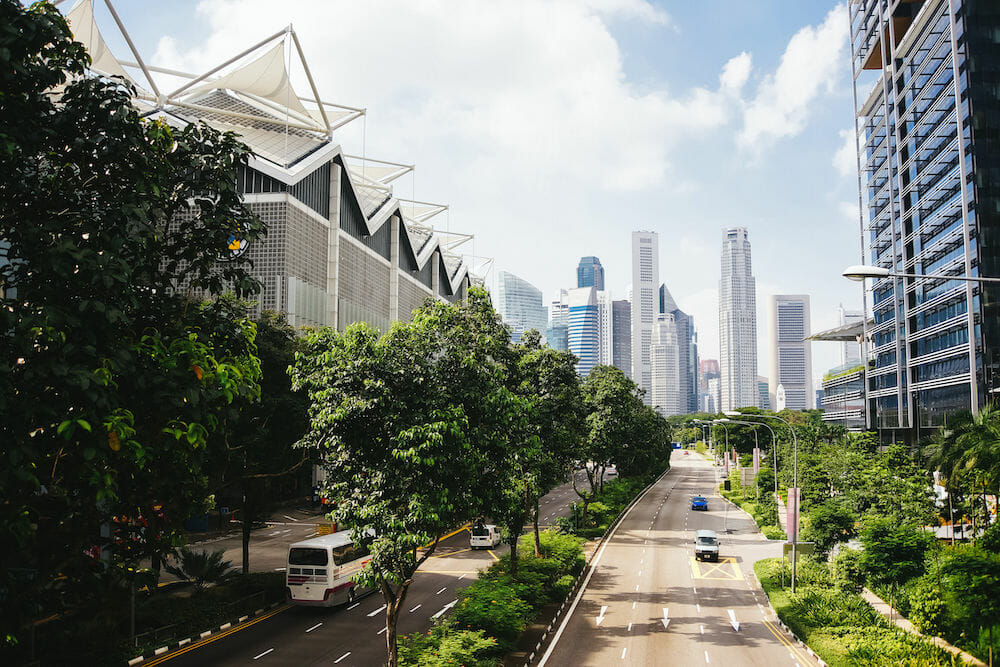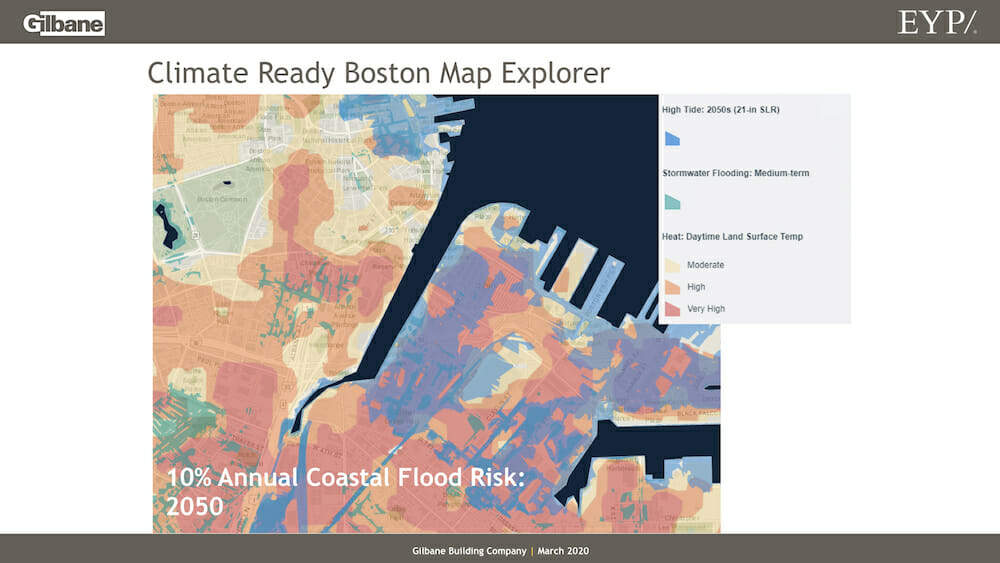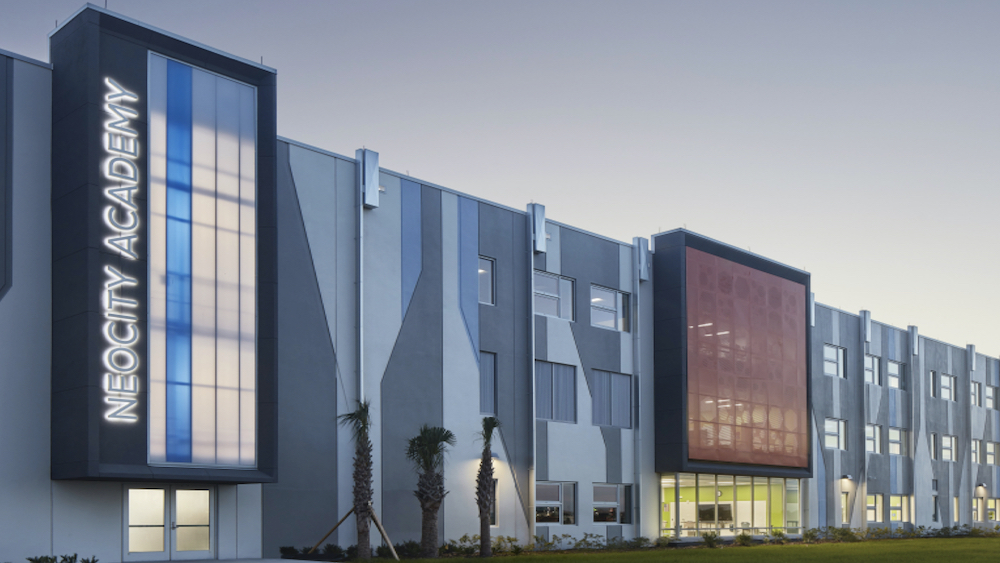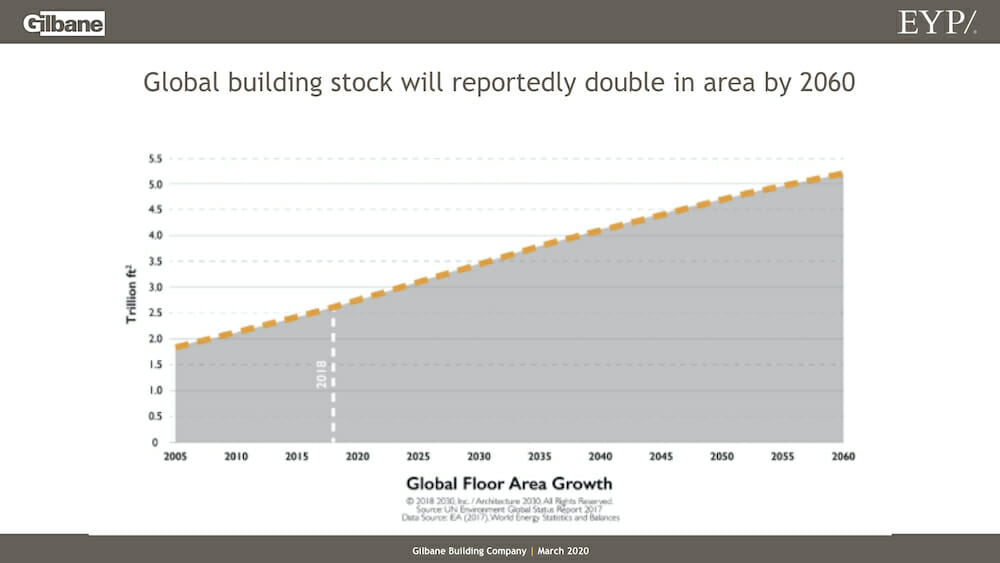The Sustainability of an Evolving Skyline Recap
Design Museum Mornings • March 2020
By Thais Jacomassi

CoDesign Collaborative offered our first virtual CoDesign Collaborative Morning this month, sponsored by EYP; truly emphasizing our nomadic community and bringing forth people from all over the country to listen in to Mark Winslow, Project Executive of Environmental Solutions at Gilbane Building Company, present on the complex and evolving topic of sustainability and the path to net-zero carbon. Mark has over 30 years in the industry and addressed a variety of environmental and sustainable issues in relation to the construction business.
Mark began the presentation by stating its intent as an awareness training. With this being such an evolving topic, there is a need for designers to acknowledge this fact and adapt to it. At our current rate, building construction and operation generates 40% of global gas emissions. In the next few decades, the building stock is meant to double, meaning that if we continue at our current rate, we will be adding an entire New York City every month for the next 40 years. As more gas emissions are released into the atmosphere, heat is being trapped in, sea levels are rising, extreme weather events are wreaking havoc as a consequence. These are few of the many reasons that construction needs to take place in a different manner.

Boston has been at the forefront of this topic. Due to Boston’s own risk of flooding in the Seaport and Downtown areas, Mayor Walsh has made plans to make Boston a fully carbon neutral city by 2050. The city is taking steps to make energy supply cleaner and more resilient by beginning its transition to zero-net carbon construction, which would in turn improve existing buildings as well. Along with this, Boston is supporting the adoption of zero-emission vehicles.

There has been a lot of interest for fossil-fuel-free projects, such as a K-12 school in Brookline, whose goal was to reduce its carbon footprint. These efforts, though, extend outside of Boston as Mark mentioned Neocity Academy in Florida. The ultimate goal for this institution was to be net-zero and for it to be a model for other schools in the state. A key aspect to this project was the utilization of light. Daylight was key to the learning environment and LED lights were put in order to conserve 75% of the energy that would have been used otherwise. This project, and others like it, are funded by taxes and prove to be less of a burden in the long-term.
This is an exciting time for manufacturers as they adapt to new processes and find new ways to measure embodied and operational carbon, so that they may be able to work within their budgets to reduce carbon emissions in construction. Recently, due to COVID-19, our ways of living and our relations have taken a deep dive. Mark, along with Jacob Higginbottom, of EYP, both took the time to acknowledge how the environment has reacted in response to social distancing and quarantine. They mentioned places like Venice, where the waters in the canals have become clear enough for the fish to be visible and the swans to return. There is something to be acknowledged here and it is a designer’s job to look over the issue at hand and find new ways to work within them so that the situation may improve. It is essential to evolve along with it.
